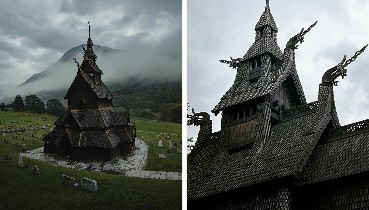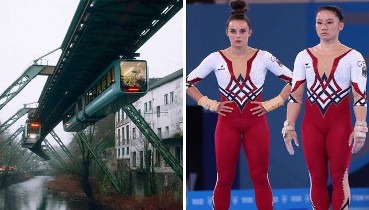

Termites Outsmart Humans When it Comes to HVAC Systems
Termite mounds can teach us the secret to creating "living and breathing" buildings that use less energy.
:max_bytes(150000):strip_icc():format(webp)/termite-mounds-29a516bddf704303adf5144cc9159b0d.jpg)
While humans have been building McMansions and other structures that prioritize neither efficiency nor performance, other members of the animal world have been working on brilliant designs engineered to best meet their needs. Granted, people practicing vernacular architecture have their buildings figured out. But in too many places, we have structures that don't work with nature, and we end up relying on resource-hungry climate-control contraptions to keep our homes livable.
Currently, 25% of the energy produced worldwide is used to heat and cool homes and commercial buildings. "As incomes rise and our planet warms, the number of air conditioning units is expected to triple from 1.6 billion units today to 4.8 billion in 2050," according to MIT's Climate Portal. "Not only does this process use a lot of electricity, but AC units also tend to leak refrigerants, which are often hydrofluorocarbons: greenhouse gases that are hundreds of times stronger than carbon dioxide."
The question is: How do we pivot to affordable, lower-carbon, non-polluting ways to cool and heat our buildings?
Learn from termites, obviously!
In a new study published in Frontiers for Materials, researchers revealed how termite mounds can instruct us on creating comfortable interior climates that don’t have the carbon footprint of air conditioning, explains Mischa Dijkstra in Frontiers Science News.
"Scientists studied the ‘egress complex’ of Macrotermes michaelseni termites from Namibia, which appears to promote moisture regulation and gas exchange," writes Dijkstra "They showed that the layout of this lattice-like network of tunnels can intercept wind around the termite mound to create turbulence inside, which can power ventilation and control the interior climate."
"These properties can be copied to create a comfortable climate in human buildings with little energy," he adds.
Many termites are known as ecosystem engineers, species that create, destroy, modify, or maintain habitats in significant ways. And we're not talking about termites that have a taste for your home, per se. We're talking about termites that build skyscrapers.
Some genera of termites build mounds reaching 26 feet in height, making their towers the world’s largest animal-built structures. (There are unconfirmed reports of a 42-foot mound in the Republic of Congo built by an African species known as the war-like termite!)
Over tens of millions of years, termites have worked on perfecting their building methods—and there are lessons to learn.
“Here we show that the ‘egress complex’, an intricate network of interconnected tunnels found in termite mounds, can be used to promote flows of air, heat, and moisture in novel ways in human architecture,” said Dr David Andréen, a senior lecturer at Lund University and the study’s first author.
Looking at Termites in Namibia
For the study, Andréen and co-author Dr. Rupert Soar, an associate professor at the School of Architecture, Design and the Built Environment at Nottingham Trent University, turned to Macrotermes michaelseni. Also known as giant-mound termites, more than a million individuals can comprise a colony.
The team focused on the egress complex, a dense, lattice-like network of tunnels, as you can see in the top photo. This structure connects wider conduits inside with the exterior. "During the rainy season (November through April) when the mound is growing, this extends over its north-facing surface, directly exposed to the midday sun," writes Dijkstra. "Outside this season, termite workers keep the egress tunnels blocked. The complex is thought to allow evaporation of excess moisture, while maintaining adequate ventilation."
Andréen and Soar scanned and 3D-printed a copy of a fragment of a real egress complex and explored how the layout of the structure creates oscillating pulse-like flows.
Turbulence Helps Ventilation
Through various experiments, they found that tunnels in the complex interact with the wind blowing outside in ways that enhance the mass transfer of air for ventilation. Wind oscillations at certain frequencies generate turbulence inside, they explain. The effect is to carry respiratory gases and excess moisture away from the mound’s center.
D. Andreen
“When ventilating a building, you want to preserve the delicate balance of temperature and humidity created inside, without impeding the movement of stale air outwards and fresh air inwards. Most HVAC systems struggle with this. Here we have a structured interface that allows the exchange of respiratory gasses, simply driven by differences in concentration between one side and the other. Conditions inside are thus maintained,” explained Soar.
True Living, Breathing Buildings
The authors conclude that the egress complex can create wind-powered ventilation of termite mounds with only weak winds outside of the mound—and that, when applied to human structures, could facilitate climate control and ventilation.
D. Andreen and R. Soar
“We imagine that building walls in the future, made with emerging technologies like powder bed printers, will contain networks similar to the egress complex. These will make it possible to move air around, through embedded sensors and actuators that require only tiny amounts of energy,” said Andréen.
“Construction-scale 3D printing will only be possible when we can design structures as complex as in nature," said Soar. "The egress complex is an example of a complicated structure that could solve multiple problems simultaneously: keeping comfort inside our homes, while regulating the flow of respiratory gasses and moisture through the building envelope.”
“We are on the brink of the transition towards nature-like construction: for the first time, it may be possible to design a true living, breathing building.”
And thus concludes this lesson from our termite teachers. You can find the whole study here: Termite-inspired metamaterials for flow-active building envelopes.
Recommended Videos
 25 Horrible Design Fails That Will Leave You Speechless8776 views
25 Horrible Design Fails That Will Leave You Speechless8776 views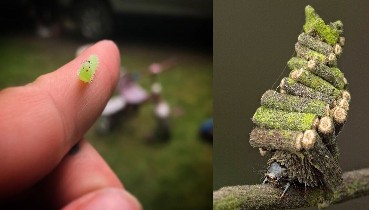 40 Of The Most Adorable Bugs That Enchant You1516 views
40 Of The Most Adorable Bugs That Enchant You1516 views-
Advertisements
 190 Times People Captured Such Perfectly Timed Pics, They Had To Celebrate It By Sharing Them Online (New Pics)9123 views
190 Times People Captured Such Perfectly Timed Pics, They Had To Celebrate It By Sharing Them Online (New Pics)9123 views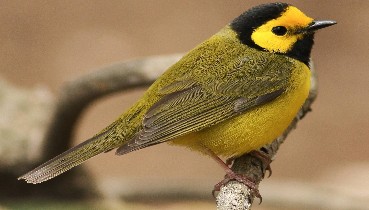 The hooded warbler (Setophaga citrina)1222 views
The hooded warbler (Setophaga citrina)1222 views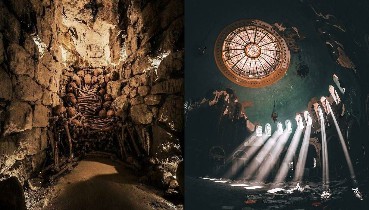 10 Interesting But Forgotten Places Photographed By Urban Explorers288 views
10 Interesting But Forgotten Places Photographed By Urban Explorers288 views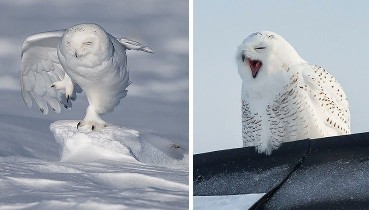 Perfectly Timed Photos Of Owls Are Hilarious Yet Awkward (7 Pics)1994 views
Perfectly Timed Photos Of Owls Are Hilarious Yet Awkward (7 Pics)1994 views The Great Eared NightJar Looks Just Like A Fluffly Little Dragon And It’s Amazing64 views
The Great Eared NightJar Looks Just Like A Fluffly Little Dragon And It’s Amazing64 views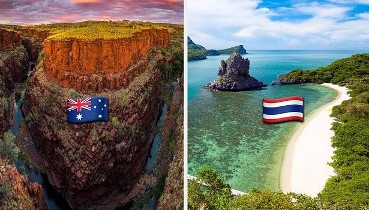 22 Incredible National Parks From Around The World That Straight Up Look Like They Could Be On Another Planet676 views
22 Incredible National Parks From Around The World That Straight Up Look Like They Could Be On Another Planet676 views
:max_bytes(150000):strip_icc():format(webp)/frontiers-materials-termite-mounds-egress-complex_moundBangalore-17.jpg1-9c58b136cc3c46dc88446b464d34154c.png)
:max_bytes(150000):strip_icc():format(webp)/materials-egress-complex.jpg1-a63e7e32839e47cfb9427ad0964fe101.jpg)

